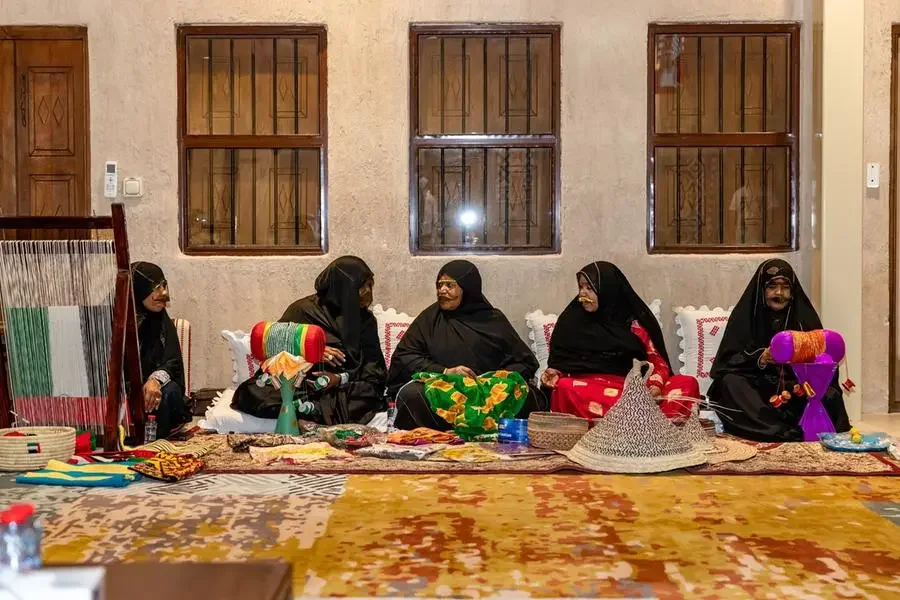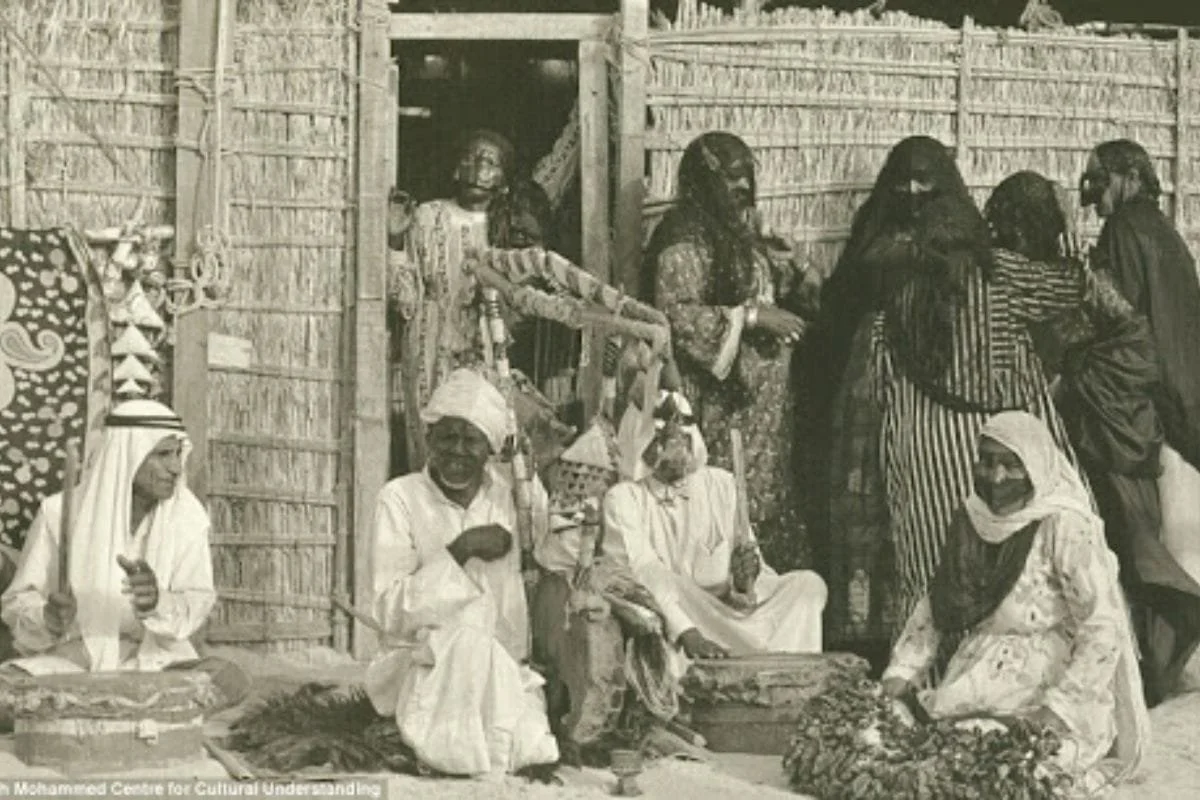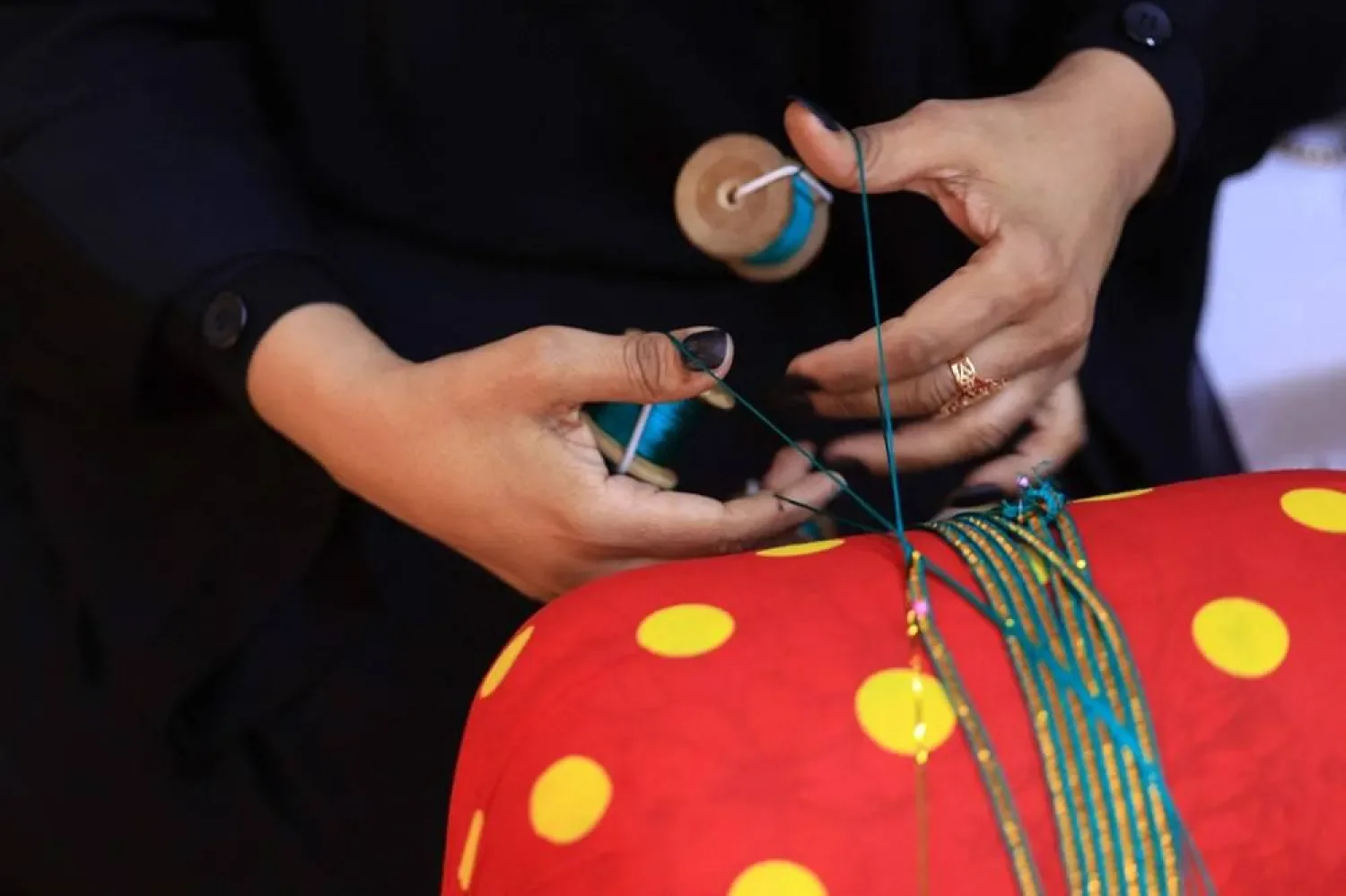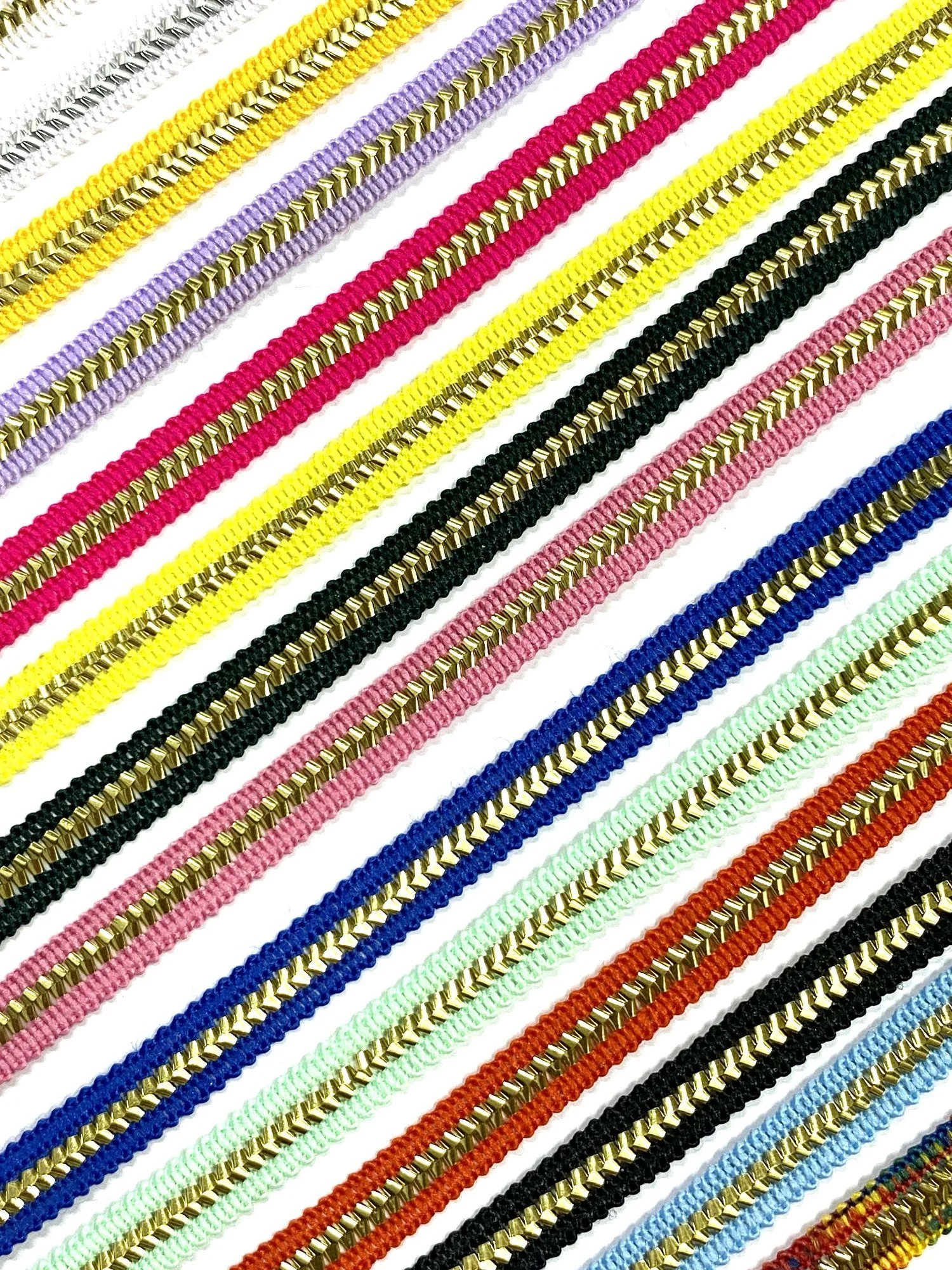When Less Is More: Talli and the Power of Creative Constraint
There is a subconscious joy in sharing how an idea came to life with minimal resources. You not only feel as though you have challenged yourself, but also as if you have finally learned how to live in the moment. As I read Austin Kleon’s ‘Steal like an Artist,’ a line stood out:
“Don’t make excuses for not working—make things with the time, space, and materials you have, right now. The right constraints can lead to your very best work."
I was reminded of how the best designs and artwork have come from being present and have had far more value than a series of quickly churned-out goods. Take the magical art of Talli, for instance—a beautiful and historically significant textile technique in Emirati culture that embodies these principles. It was recently inscribed on UNESCO’s Representative List of the Intangible Cultural Heritage of Humanity in 2022.
Emirati women engaged in making Talli and other handicrafts
Source: Dubai Culture and Arts Authority & Zawya
Link to image source : (https://www.zawya.com/en/life/culture/intangible-cultural-heritage-unesco-inscribes-47-elements-including-uaes-al-talli-traditional-embroidery-skills-yxb78c2q)
Living in the Moment: Strengthening Bonds and Passing Down Traditions
Emirati women engaged in making Talli and other handicrafts
Source: Sheikh Mohammed bin Rashid Al Maktoum Centre for Cultural Understanding (originally) via HiDubai Focus website
Link to image source : https://focus.hidubai.com/bedouin-roots-unveiling-the-uaes-tribal-history/
I distinctly remember a conversation with a friend’s grandmother on UAE National Day. She would get more and more animated every time I asked about the traditions she had grown up with. One particular story was about her connection to Talli, which my friend beautifully translated.
While other ladies would braid together, exchange news, and share stories, her mother chose to use the art of Talli as a shared heritage to connect with her daughters instead.
An Emirati woman holds the Dahary (bobbins) in order to weave the Talli design during an annual heritage festival in Al-Ain on November 10, 2023. (AFP)
Link to image source: https://english.aawsat.com/culture/4943196-emiratis-battle-preserve-dying-art-embroidery
“She taught us how to be in the moment and patiently showed me and my sisters how to adjust the Dahary (bobbins). We would spend exactly an hour every day together, and only a small part of the design would be completed. But we all looked forward to it, as sometimes we would also get to hear stories of our ancestors,” she smiled. “We did not have school; our real life experiences were our classroom.”
“Did you get a chance to connect the same way with your children or grandchildren in the family?” I asked. She looked at my friend and playfully smacked her arm. “I tried. These children appreciate the art, but not in the way we did back then. I tried teaching my eldest grandchild, but she gave up, saying that her tailor can make it for her.” She shook her head.
Beyond the Gold: The Value of Time
A common phrase that Asian millennials hear from their grandparents is, “things were so simple back then; we used every ounce of the material and there was no wastage.”
An Emirati woman spins cotton by hand.
Image source: Source unknown & via google
This philosophy resonates deeply with Emirati culture. After all, the UAE was once a desert, and back then, resources were a different kind of scarce. Many had to move around in search of grazing land for cattle and seasonal rain. In the case of Talli, the traditional embellishment incorporated materials based on the family's means. From the purest cotton and precious metals like gold and silver to the most synthetic materials, it was dependent on the wealth and status of the family. “We used a simple cotton for ours, and it was more pure than what you children know of today,” Latifa’s grandmother recalls.
An up close image of Talli in gold
Link to image source : Abu Dhabi culture website, https://abudhabiculture.ae/en/cultural-heritage/intangible/unesco-ich-inscribed-elements/talli
“We came from a humble family,” she smiles, “but I knew some girls who had more grand ones with lots of gold and silver. And others who were not very well-off would even repurpose material from their less-used clothes.”
Yet, if you ask Latifa’s grandmother what truly constituted the value of Talli, she’ll share the same wisdom with you that she did with her grandchildren. “The Bedouin life was equally demanding. But we valued every second. The lack of resources and the time it took for us to build and assemble these things you now call crafts was a representation of our effort, our culture. That is the real value of Talli: time.”
It’s a sentiment my own grandmothers used to also share about some of their traditions.
Talli in the Modern Marketplace
The thing about traditions is that sometimes they are relevant to the present, and at times they're just an inconvenience to our lifestyles. So where does Talli actually stand today, now that there are ample resources at our fingertips?
Mass, readymade Talli available at haberdashery stores in Dubai.
Image source: Via stock supplier in Satwa, Dubai.
If you ever walk around Satwa—a neighborhood well known for its exquisite fabrics and haberdashery—you’ll stumble upon ready-made Talli. And it's the kind that Latifa’s grandmother would never recognize. This is a mass-manufactured piece that looks like a crafty item easily stuck on a greeting card. According to one of the salesmen, it's not often sold, and when it is, it's to people who have no idea what it is. The result is a version of the craft that, having been made with an excess of resources, feels like it has no life.
An artisan from Qasr Al Hosn (House of Artisans) in Abu Dhabi works live on a piece of Talli.
Link to image source:
https://www.thenationalnews.com/uae/heritage/2021/08/26/the-abu-dhabi-artisans-preserving-bedouin-skills/
But walk into spaces like the House of Artisans (Abu Dhabi), Al Ghadeer Arts (Abu Dhabi), and the Turath Centre for Traditional Handicrafts (Dubai), and you’ll experience the true character of the craft. With the very few authentic Emirati artisans braiding in real time, these centers protect and highlight the immense value these traditions hold in the modern day.
An illustration from the Qasr Al Hosn free House of Artisans coloring book.
Link to illustration/image source: https://qasralhosn.ae/house-of-artisans/
Which to me is a true testament to Kleon’s phrase and proof that a lack of resources actually sharpened creativity. And in the case of Talli, it will always be how the masterful technique—i.e., the art of being present and the time it takes—eventually channels into a complex braid that reflects the ingenious Emirati spirit.







